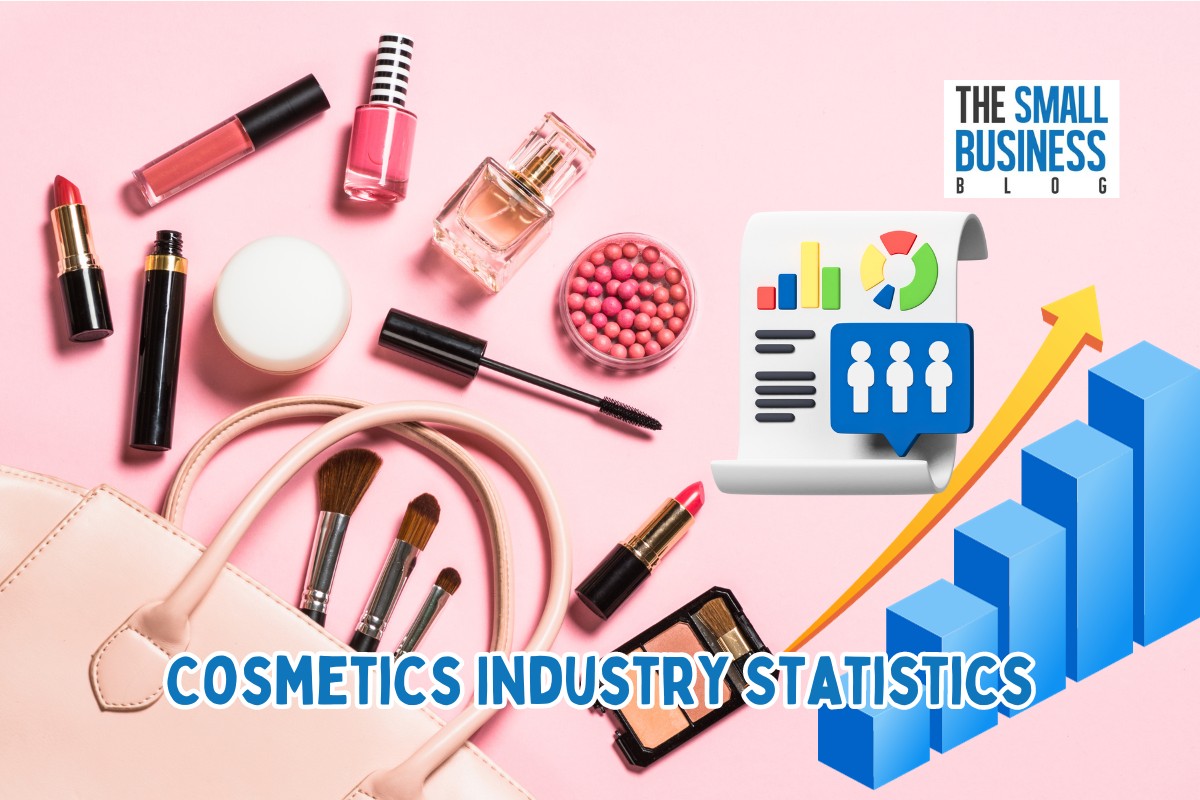Almost everyone has purchased something from the cosmetics industry, whether skincare, makeup, hair care products, or fragrances.
It has played a significant role in the lives of consumers worldwide.
Time after time, people’s demands and purchasing decisions regarding cosmetics are constantly changing.
And now, with the rise of social media and influencer marketing, the way brands connect with consumers through different applications like Instagram and TikTok is also changing.
By carefully studying these cosmetics industry statistics, it will provide us with some valuable insights into the dynamics of this industry, shedding light on the emerging trends, consumer preferences, and the influence of various factors on purchasing decisions.
Post Contents
- 1 Key Statistics
- 2 Top Cosmetics Industry Statistics in 2024
- 2.1 1. The worth of the global cosmetics industry is estimated to be $571.10 billion by the end of 2023
- 2.2 2. The cosmetics industry is projected to grow 3.8% annually
- 2.3 3. The COVID-19 pandemic caused an 8% decline in the beauty and cosmetics market
- 2.4 4. 22% of consumers reported changes in their skincare routines during the pandemic
- 2.5 5. Prior to COVID-19, around 85% of beauty products were acquired through physical stores or merchants
- 2.6 6. Makeup accounts for a significant portion of the global cosmetic market, holding nearly 20% of its total value
- 2.7 7. Makeup contributes an estimated $85 billion to the industry’s overall worth
- 2.8 8. Cosmetic retailers generated $17.09 billion from e-commerce platforms
- 2.9 9. About 41% of the global cosmetics market is dedicated to skincare products
- 2.10 10. The global skincare industry is now valued at a whopping $171.7 billion.
- 2.11 11. The US cosmetics industry holds a commanding position in the global beauty landscape
- 2.12 12. Boasting an impressive market value of $12 billion, L’Oreal stands as number one among US cosmetics companies.
- 2.13 13. Facial and eye cosmetics reign supreme in the US cosmetics and beauty industry
- 2.14 14. In 2022, beauty companies made a substantial investment of $7.7 billion in advertising efforts
- 2.15 15. Huda Beauty and Kylie Cosmetics reign supreme among all the cosmetics companies in the United States
- 2.16 16. Beauty shoppers have found a valuable ally in influencers
- 2.17 17. Beauty influencers on YouTube command a remarkable 60% share of beauty content
- 2.18 18. TikTok’s captivating influence has led to an astounding 89% of its users making beauty product purchases inspired by the app’s content
- 2.19 19. 82% of beauty shoppers relying on Instagram daily
- 2.20 20. 46% of consumers remain steadfast in their preference to physically interact with beauty products
- 2.21 21. About three-quarters of consumers are more likely to purchase from a company that features customer reviews on its website
- 2.22 22. The men’s personal care and beauty industry has reached a staggering $166 billion valuation by 2022
- 2.23 23. On average, women invest $69 more per month on cosmetics compared to men
- 2.24 24. Almost a quarter of young women consider makeup as an essential part of their daily routine
- 3 Conclusion
Key Statistics
- Globally, the cosmetics industry is worth a staggering $571.10 billion.
- The beauty and cosmetics industry experienced a significant downturn in 2020, with the COVID-19 pandemic contributing to an 8% decline in sales.
- Makeup comprises nearly 20% of the industry’s overall sales.
- Skincare products, on the other hand, contribute about 41% to its overall market value.
- The US cosmetics industry has generated about $91.4 billion revenue exerting a significant influence on the global beauty scene.
- L’Oreal, with its $12 billion revenue, has topped the charts of the US cosmetics industry.
- 60% of all YouTube beauty content is crafted by beauty vloggers.
- The men’s personal care and beauty industry skyrocketed to a $166 billion valuation in 2022.
Top Cosmetics Industry Statistics in 2024
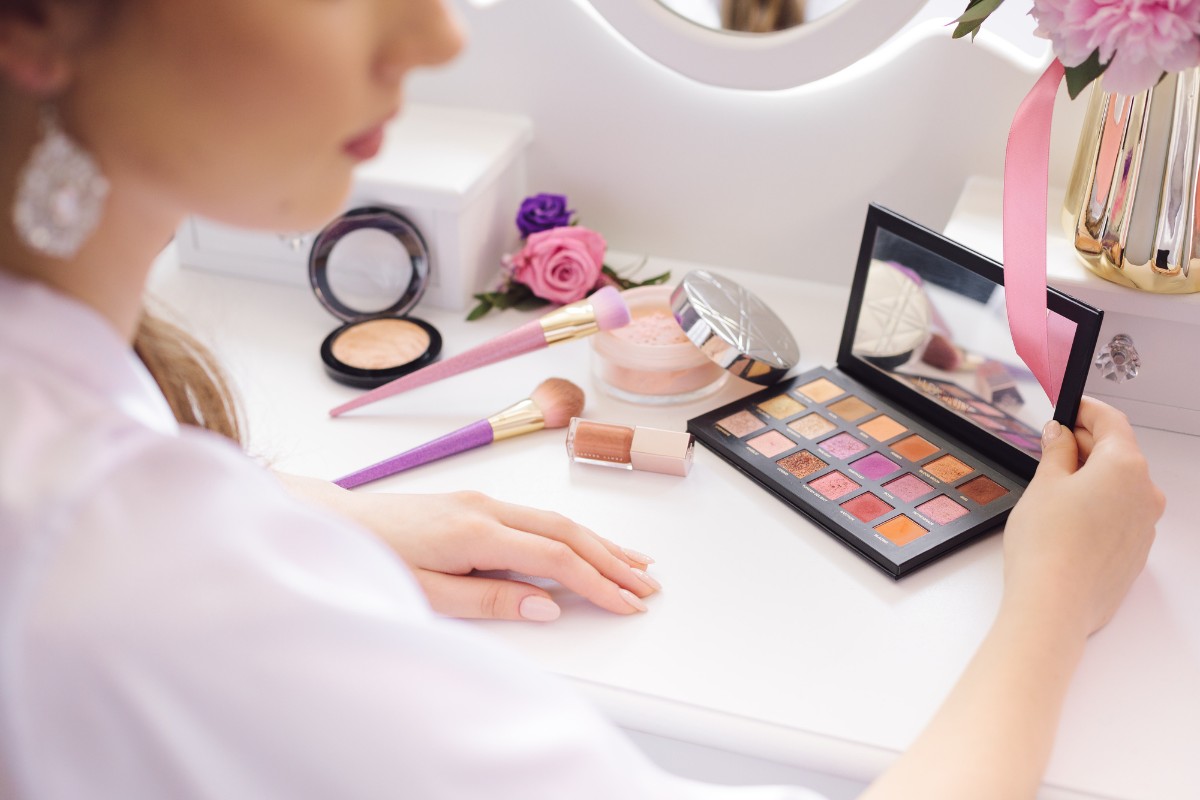
1. The worth of the global cosmetics industry is estimated to be $571.10 billion by the end of 2023
People are increasingly appreciating the importance of cosmetics, especially in an era where looks are highlighted in our online life.
With a current value predicted to reach $571.1 billion by the end of 2023, there is no doubt that the global cosmetics industry is one of the fastest-growing industries today.
The industry is expected to generate an even higher revenue in the future as consumer demand for cosmetic products remains strong worldwide.
(Market Us)
2. The cosmetics industry is projected to grow 3.8% annually
The global cosmetics industry is projected to record a compounding annual growth rate of 3.8% from 2023 to 2028.
This comes as more consumers prioritize self-care, appearance enhancement, and personalized beauty experiences, as influenced by social media trends.
According to Statista, the market’s largest segment is Personal Care, with a projected market volume amounting to $274 billion this year.
Beauty and Personal Care Market Value from 2022 to 2023:
2022:
- Personal Care – the segment was valued at $238 billion during the year
- Skincare – the segment was valued at $143 billion during the year
- Cosmetics – the segment was valued at $93 billion during the year
- Fragrances – the segment was valued at $53 billion during the year
2023:
- Personal Care – the industry is valued at $274 billion this year
- Skincare – the industry is valued at $155 billion this year
- Cosmetics – the industry is valued at $103 billion this year
- Fragrances – the industry is valued at $58 billion this year
(Statista)
3. The COVID-19 pandemic caused an 8% decline in the beauty and cosmetics market
In 2020, the global beauty and cosmetics market experienced a downturn, with sales declining by 8% compared to the previous year.
This decline was primarily driven by the COVID-19 pandemic, which had a significant impact on consumer behavior and purchasing patterns.
(L’Oreal Finance)
4. 22% of consumers reported changes in their skincare routines during the pandemic
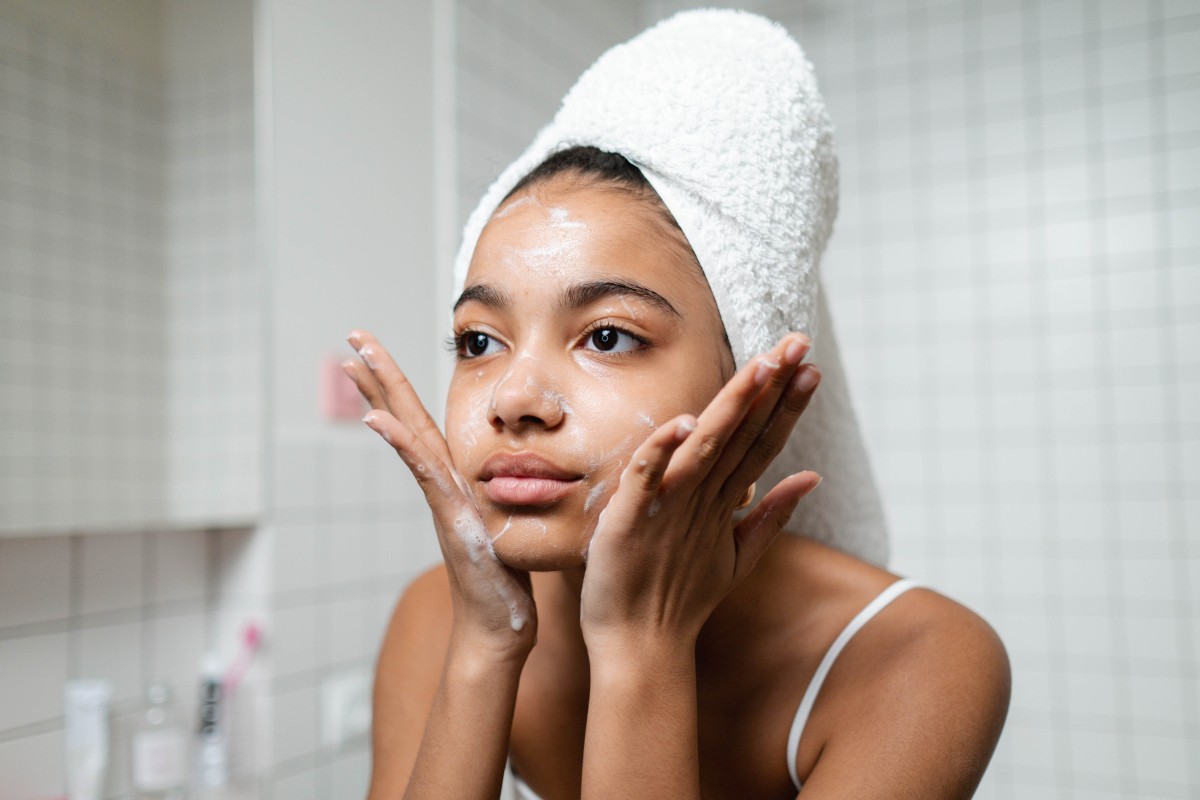
The COVID-19 pandemic triggered a noticeable change in skincare habits among women, with 22% altering their routines to adapt to new work and personal life realities.
The pandemic-induced shift towards virtual interactions and mask-wearing mandates led to a decrease in makeup usage, prompting women to focus more on skincare essentials.
Women’s skincare habits have significantly changed during the lockdowns, placing a greater emphasis on skin health, personalized routines, and wellness-focused approaches.
(NPD)
5. Prior to COVID-19, around 85% of beauty products were acquired through physical stores or merchants
Before the COVID-19 pandemic changed the global retail landscape, the beauty industry was largely dominated by physical stores, with an estimated 85% of beauty products being purchased in-store.
(McKinsey)
6. Makeup accounts for a significant portion of the global cosmetic market, holding nearly 20% of its total value
In the beauty industry, makeup holds about 20% of the market’s total value.
Makeup has held a prominent position in the global cosmetic industry for decades.
Its transformative nature and ability to express individuality have driven its popularity over the years.
Today, the popularity of K-beauty cannot go unnoticed.
In fact, North Asia captured the biggest share in the cosmetics industry in 2022.
Take a look at the cosmetics industry distribution in the regions of the world, in terms of market share.
- North Asia – the region captured 32% of the cosmetics industry’s overall market share in 2022
- North America – the region captured 28% of the cosmetics industry’s overall market share in 2022
- Europe – the region captured 22% of the cosmetics industry’s overall market share in 2022
- South Asia Pacific, Middle East and North Africa Region – the region captured 10% of the cosmetics industry’s overall market share in 2022
- Latin America – the region captured 8% of the cosmetics industry’s overall market share in 2022
(Statista)
7. Makeup contributes an estimated $85 billion to the industry’s overall worth
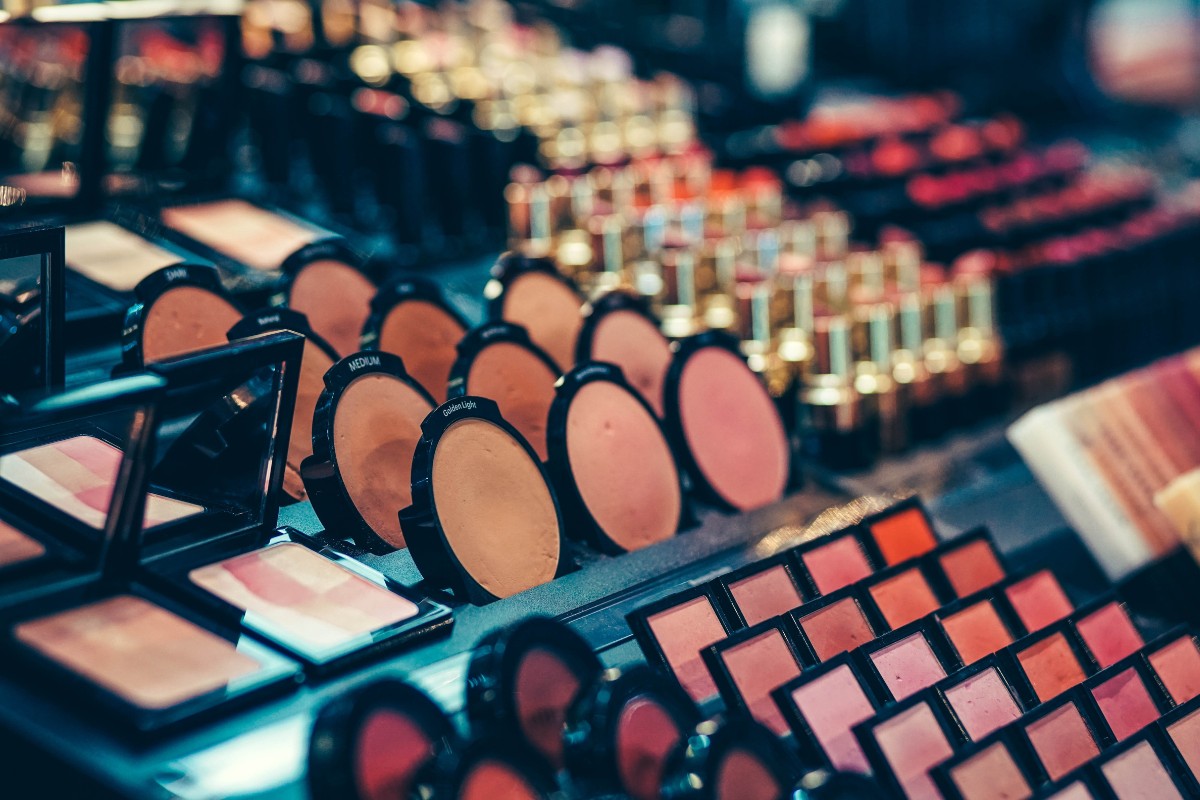
Makeup accounts for about $85 billion of the cosmetics industry overall revenue, making it one of the most substantial portions of the global cosmetics industry.
Makeup brands have adapted some technological advancements and have shown their versatility to the world as they continue to strengthen their global appeal.
(Statista)
8. Cosmetic retailers generated $17.09 billion from e-commerce platforms
With the rise of different e-commerce platforms, the cosmetics industry has paved its way and reached a staggering $17.09 billion online sales.
Cosmetic retailers have embraced this shift especially during the surge of the COVID-19 pandemic.
They have adapted their business models and leveraging technology to cater to the evolving preferences of online beauty consumers.
(Help Lama)
9. About 41% of the global cosmetics market is dedicated to skincare products
Almost everyone has their own skincare routines, explaining why the skincare segment occupied almost half or about 41% of the global cosmetics market.
Most people value the importance of skincare products and see it as an essential part of their personal care and maintenance.
In addition, there is also a growing awareness about the importance of skin health, personalized skincare products for different skin types, and beauty trends started by influencers.
(Statista)
10. The global skincare industry is now valued at a whopping $171.7 billion.
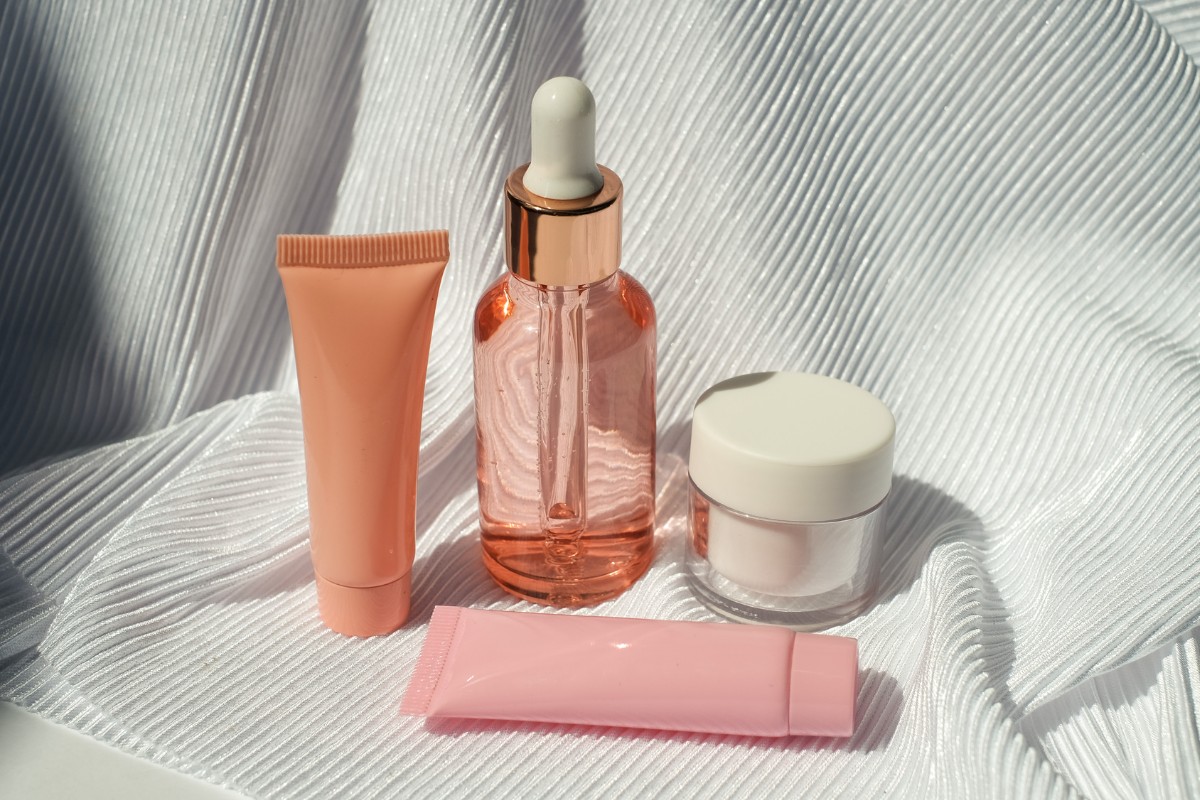
The immense value of the skincare industry is evident in its estimated worth of $171.7 billion, showcasing its significance in the global beauty market.
(The Davis Enterprise)
11. The US cosmetics industry holds a commanding position in the global beauty landscape
One of the most powerful forces commanding the global cosmetics industry is the United States, with an estimated worth of $91.4 billion.
Here is the Health and Personal Care store sales in the US between 2016 to 2022:
- 2016 – the segment generated $318 billion sales in the US during the year
- 2017 – the segment generated $323 billion sales in the US during the year
- 2018 – the segment generated $338 billion sales in the US during the year
- 2019 – the segment generated $343 billion sales in the US during the year
- 2020 – the segment generated $356 billion sales in the US during the year
- 2021 – the segment generated $387 billion sales in the US during the year
- 2022 – the segment generated $399 billion sales in the US during the year
(Zippia)
12. Boasting an impressive market value of $12 billion, L’Oreal stands as number one among US cosmetics companies.
Among the thousands of brands available in the United States, L’Oreal has retained its position on top of the boards, holding an impressive market value of approximately $12 billion.
As the company continues to adapt to evolving trends and leverage technology, its position as the number one in the cosmetics industry is expected to remain strong, shaping the market and influencing consumer choices in the coming years.
Take a look at the leading brands in the cosmetics industry and their respective beauty sales.
- L’Oreal – the brand recorded $35.64 billion in beauty sales in 2022
- Unilever – the brand recorded $24.17 billion in beauty sales in 2022
- Estee Lauder – the brand recorded $16.22 billion in beauty sales in 2022
- P&G – the brand recorded $14.42 billion in beauty sales in 2022
- Shiseido – the brand recorded $8.68 billion in beauty sales in 2022
(Exploding Topics)
13. Facial and eye cosmetics reign supreme in the US cosmetics and beauty industry
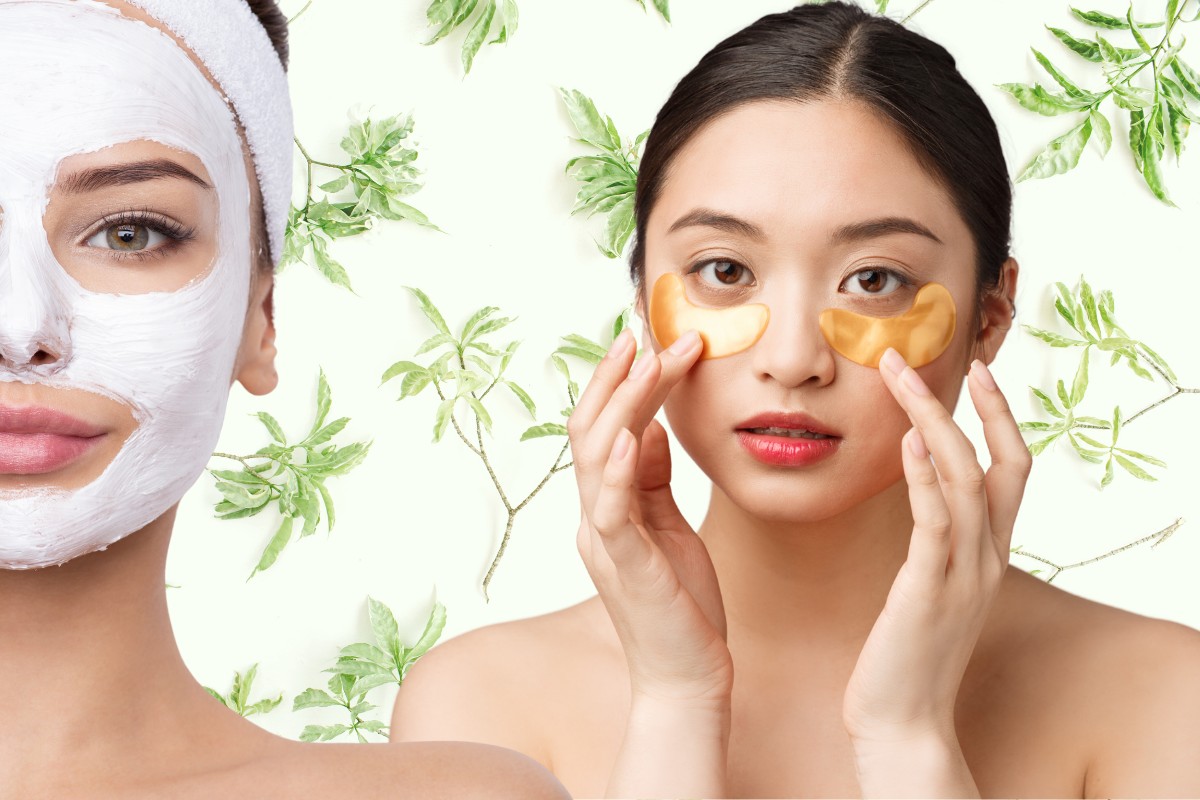
Americans stand as the world’s leading consumers of cosmetics, purchasing nearly one-fourth of all beauty products sold globally.
Consumers in this region have long been known for their passion for beauty and self-expression, and this enthusiasm is reflected in their significant contribution to the global cosmetics market.
Facial and eye cosmetics reign supreme in the US cosmetics and beauty industry, generating the highest profits and driving industry growth.
This dominance is fueled by high consumer demand, versatility in application, premium pricing, continuous innovation, and effective marketing strategies.
(Illumination Consulting)
14. In 2022, beauty companies made a substantial investment of $7.7 billion in advertising efforts
The $7.7 billion invested in advertising by beauty companies in 2022 is a testament to the industry’s recognition of the power of marketing and communication in achieving its business objectives.
The beauty industry is driven by intense competition, with numerous brands vying for consumer attention and market share.
As a result, companies are increasingly relying on advertising to differentiate themselves, promote their unique selling propositions, and attract new customers.
As consumer preferences continue to evolve and the digital landscape expands, advertising will remain a crucial tool for beauty companies to navigate the competitive market, build brand loyalty, and drive sales growth.
(Exploding Topics)
15. Huda Beauty and Kylie Cosmetics reign supreme among all the cosmetics companies in the United States
Huda Beauty and Kylie Cosmetics have demonstrated their mastery of social media engagement, establishing themselves as the preeminent cosmetics brands in the United States.
In terms of social media followers, Huda Beauty has successfully managed to get over 50 million Instagram followers with an average engagement rate of 2.85%.
On the other hand, Kylie Cosmetics has over 24 million followers on Instagram with an average engagement rate of 0.44%.
(Help Lama)
16. Beauty shoppers have found a valuable ally in influencers
As social media continues to evolve, the influence of beauty influencers is likely to grow even stronger.
In fact, 67% of beauty shoppers turned to influencers to discover new products and stay up-to-date on the latest beauty trends.
Influencers often break away from the traditional, polished beauty advertisements, opting for a more authentic and relatable approach.
With their relatable personalities, creative content, and genuine recommendations, influencers have become an indispensable resource for beauty enthusiasts seeking the latest trends, product insights, and purchasing guidance.
(KoFluence)
17. Beauty influencers on YouTube command a remarkable 60% share of beauty content
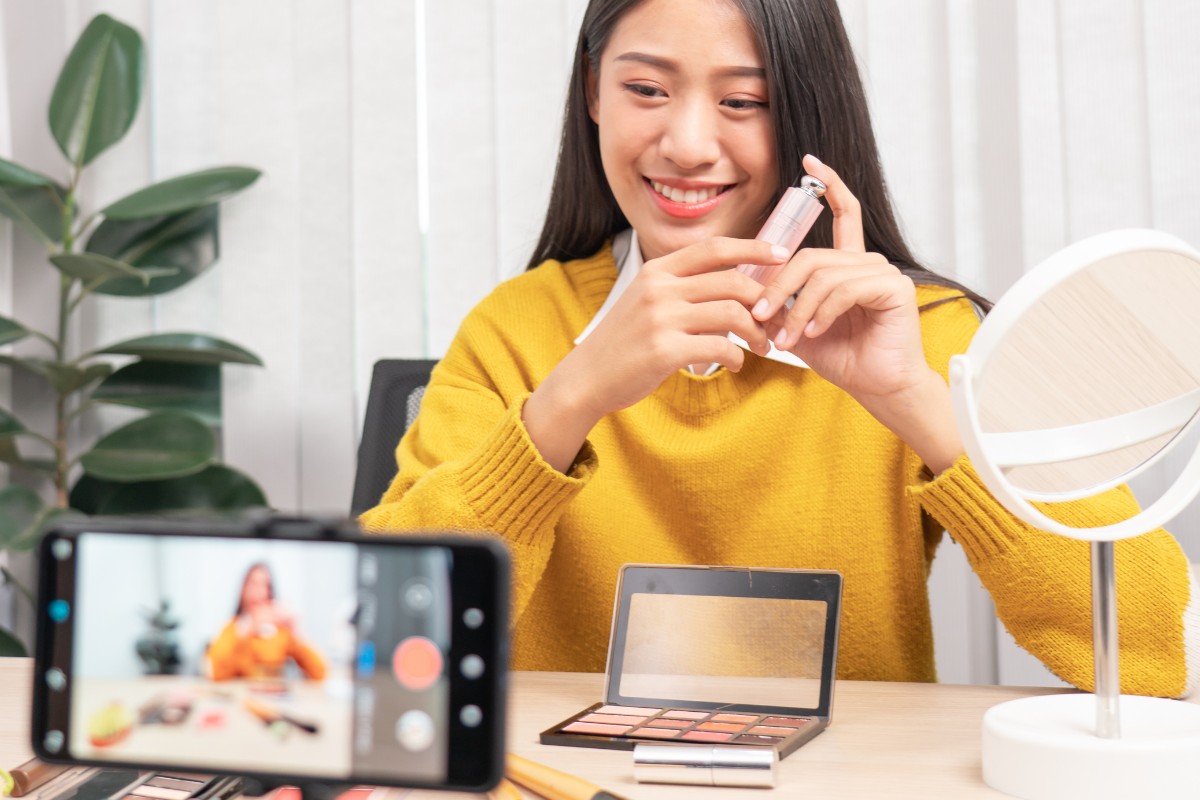
Over half or 60% of all beauty videos on YouTube are created by influencers.
One of the most probable reasons why beauty influencers have become so popular on YouTube is because they are often seen as more relatable and authentic than traditional beauty celebrities endorsing a product.
Oftentimes, influencers create their own videos, which gives them more control over the content and allows them to connect with their viewers on a more personal level.
Moreover, influencers are often able to provide viewers with more detailed and informative beauty tutorials than can be found in traditional media.
(Zippia)
18. TikTok’s captivating influence has led to an astounding 89% of its users making beauty product purchases inspired by the app’s content
An astonishing 89% of TikTok users have made beauty product purchases after seeing them on the app, a testament to the app’s ability to drive consumer behavior.
Over the past few years, TikTok has taken the social media world in a snap, it has garnered a massive user base with its captivating short-form videos and one-of-a-kind algorithm.
But the platform extends its purpose beyond mere entertainment; it has also emerged as a powerful marketing tool, particularly for cosmetic brands.
(Snipp)
19. 82% of beauty shoppers relying on Instagram daily
Social media has democratized the beauty industry by providing a platform for anyone to share their beauty tips, tricks, and expertise.
As it is seen by the fact that the beauty industry has found a powerful ally in Instagram, with 82% of beauty shoppers relying on the platform daily for inspiration, product knowledge, and purchasing decisions.
The allure of Instagram lies in its ability to seamlessly blend entertainment with information.
Within the app, beauty lovers can immerse themselves in a world of makeup tutorials, genuine product reviews, and trend-setting looks, all while gaining valuable insights into the latest beauty trends and innovations.
(Tribe)
20. 46% of consumers remain steadfast in their preference to physically interact with beauty products
Despite the convenience of online shopping, a substantial 46% of consumers maintain a preference for in-person shopping, emphasizing the value of tangible product experiences in the beauty realm.
Beauty products are inherently sensory experiences, and consumers often desire to interact with products physically to assess their texture, fragrance, and color.
In-store shopping allows consumers to swatch makeup, test skincare products, and experience the overall sensory appeal of beauty products firsthand.
(Exploding Topics)
21. About three-quarters of consumers are more likely to purchase from a company that features customer reviews on its website
Most consumers value the power of customer feedback.
In fact, 74% of consumers are more likely to trust and make a purchase from companies that showcase genuine customer reviews on their websites.
This personal preference often comes from the desire to make informed decisions based on the experiences of others, seeking validation and reassurance before committing to a purchase.
(Exploding Topics)
22. The men’s personal care and beauty industry has reached a staggering $166 billion valuation by 2022

More men are now prioritizing self-care by investing in skin care and other cosmetic products.
With this, the industry’s revenue is expected to surpass $166 billion by 2022, marking a significant milestone in the evolution of men’s personal care and beauty.
It is refreshing to see how traditional notions of masculinity are evolving, with men no longer confined to narrow definitions of what it means to be the traditional “manly.”
Self-care and grooming are no longer perceived as feminine traits, but rather as expressions of personal style, confidence, and self-respect.
(Zippia)
23. On average, women invest $69 more per month on cosmetics compared to men
It is no surprise that a notable disparity exists between men’s and women’s cosmetic expenses, with women dedicating an average of $69 more per month to cosmetics than men.
There are several factors contributing to this trend, including social expectations and cultural norms of what men and women should be, and marketing and advertising strategies by different cosmetic brands, catering more to women’s needs than men.
(Zippia)
24. Almost a quarter of young women consider makeup as an essential part of their daily routine
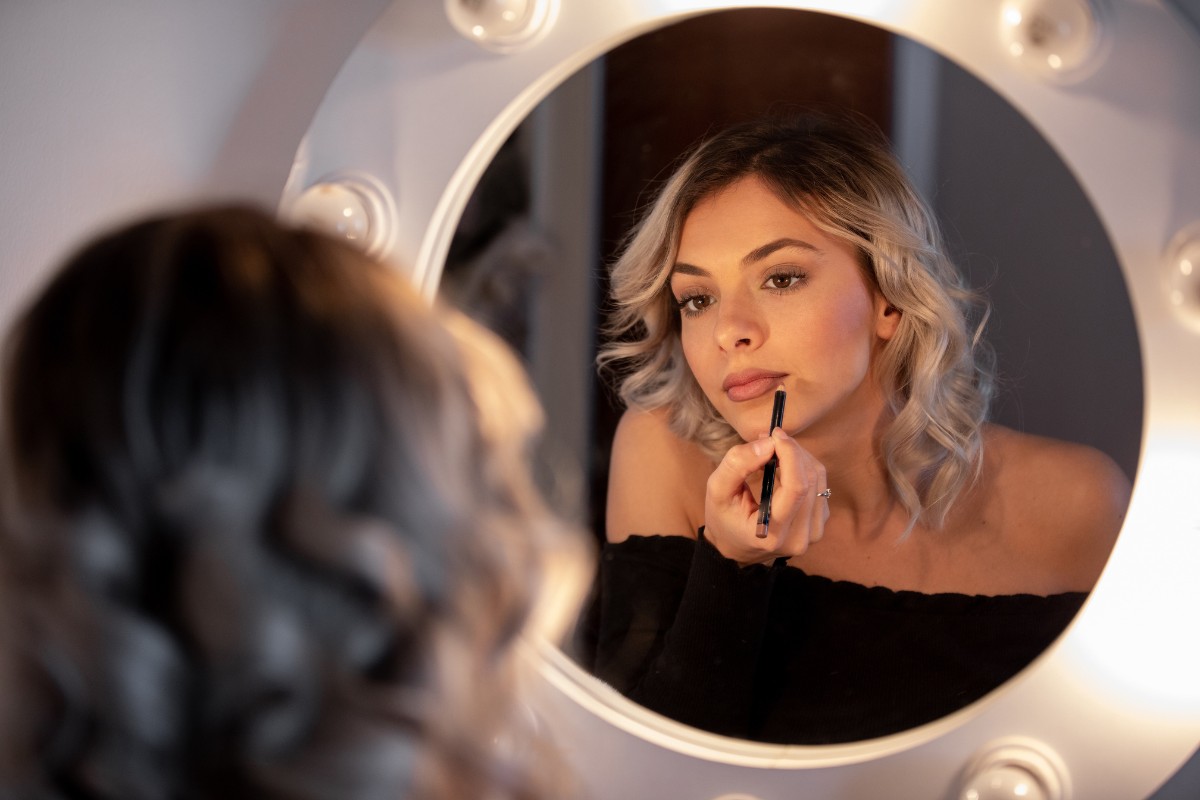
For about a quarter or 22% of young women all over the world, applying makeup is not merely an option but a necessity, it has become a ritual that enhances their confidence and allows them to express their individuality.
(PR Newswire)
Conclusion
The cosmetics industry is a vibrant and constantly changing landscape.
It has embraced the power of technology, with groundbreaking advancements in product development redefining how consumers interact with beauty products across the entire purchasing journey.
These cosmetics industry statistics highlight the importance of self care, adaptability, and innovation in today’s world.







